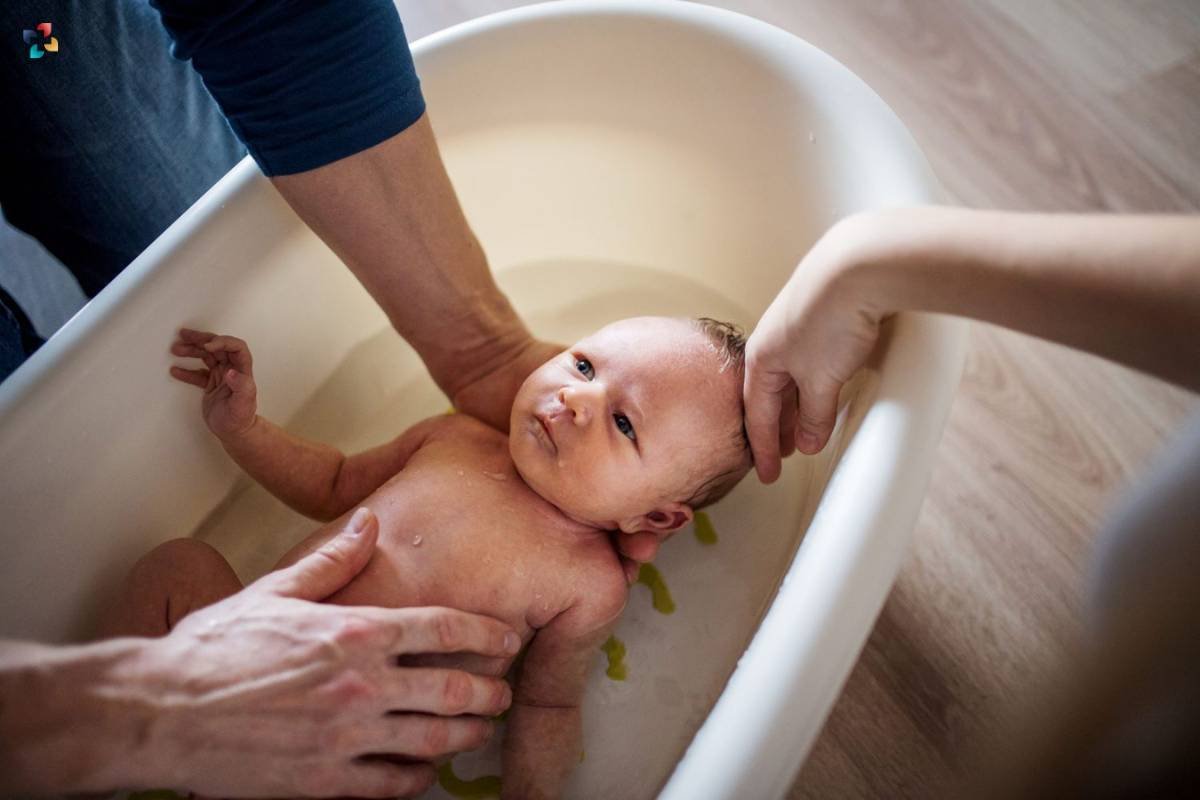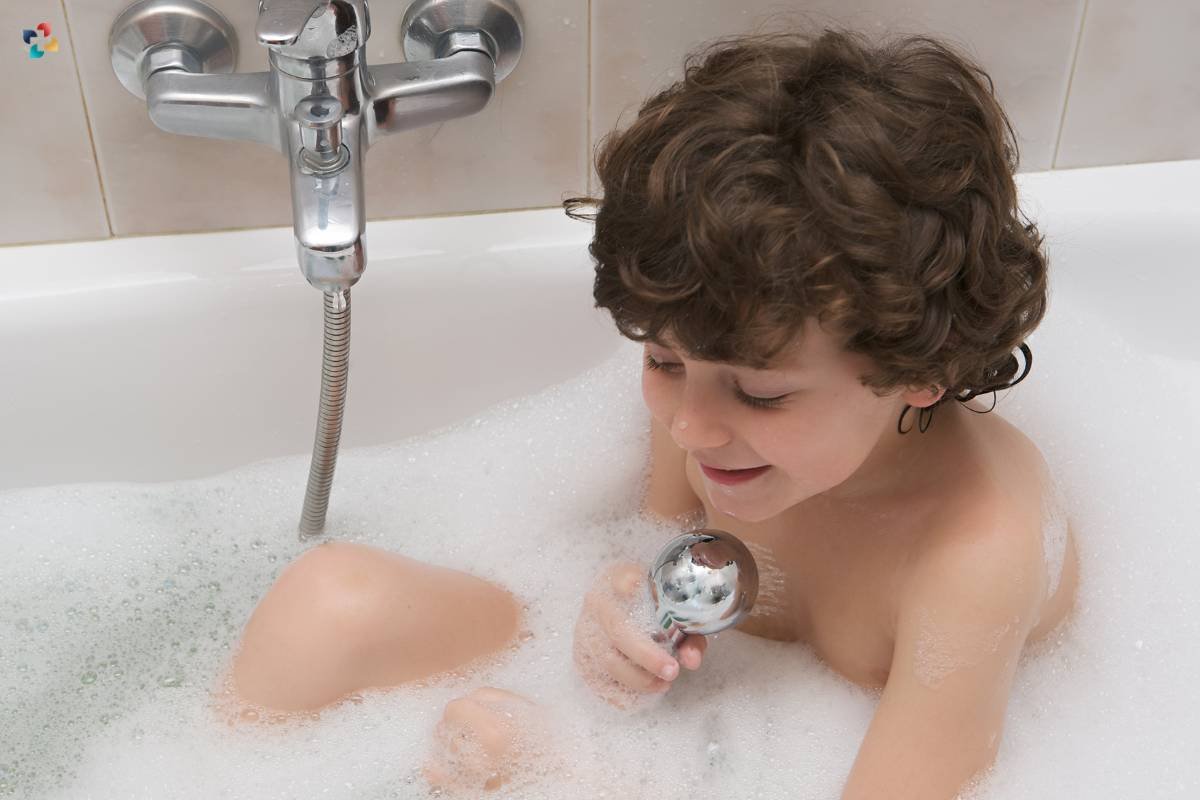Bathing is a quintessential part of a child’s routine. It’s a time for relaxation, play, and cleanliness. However, amidst the bubbles and giggles, it’s crucial to prioritize child bath safety to prevent accidents and establish a secure environment. As parents, it’s our responsibility to ensure that bath time remains a fun and hazard-free experience for our little ones. You can adapt some measures in order to prevent any mishaps during a child bath. Bathroom accidents can prove fatal and lead to severe injuries due to the impact of the same. Slipping and falling, getting hit with taps while moving in the bathroom, and, any other mishap inside the bathroom aren’t advised.
A child bath is a daily routine, as children keep on dirtying themselves as they roam around or are still crawling, depending on the age. But it is important to keep them clean to avoid any skin diseases or other health-related issues. It also puts the kids in the discipline of taking a bath every day.
Let’s have a look at some of the safety tips:
Child Bath Safety: Top Priority for Parents;
Child bath safety isn’t just about putting some rubber duckies in the tub; it’s about creating a secure environment where accidents are less likely to occur. Here’s how you can prioritize child bath safety as a parent:
1. Constant Supervision
The golden rule of child bath safety is to never leave your child unattended in the tub. Even a few inches of water can pose a drowning risk. Stay within arm’s reach at all times, and if you need to step away, wrap your child in a towel and take them with you. A child should never be left alone in the bathroom near hot devices and slippery waters or bathroom tiles.
2. Slip-Resistant Surfaces
A wet bathroom can quickly become a slippery zone. Invest in non-slip bath mats both inside and outside the tub. These mats provide a sturdy surface to prevent slips and falls during entry and exit. A child bath should be safe from slipping and falling.
3. Optimal Water Temperature
Before your child steps into the bath, always check the water temperature. Aim for lukewarm water, around 98-100°F (37-38°C), to prevent burns. A bath thermometer can be your reliable ally in ensuring the water isn’t too hot.
4. Age-Appropriate Accessories
When it comes to bath toys and accessories, choose items that are suitable for your child’s age. Avoid small parts that could become choking hazards and prioritize safety over aesthetics.
5. Proper Storage
Keep bath toys and products organized after each bath. Loose toys on the bathroom floor can become tripping hazards, and wet towels can contribute to slippery surfaces. A tidy bathroom is a safer one.
Preventing Accidents as a Parent;

Preventing accidents requires proactive measures and constant vigilance. As a parent, you play a pivotal role in ensuring child bath safety:
1. Focus on the Task
During bath time, make it a point to remain fully focused on your child. Put away your phone and any distractions, so you can respond immediately to their needs.
2. Gentle Handling
When lifting your child in and out of the tub, use gentle and secure handling techniques. A confident grip minimizes the risk of slipping or dropping your child.
3. Bathroom Child-Proofing
Extend your safety measures beyond the tub area. Install safety locks on cabinets to keep cleaning products and medications out of your child’s reach. Plug unused electrical outlets and secure cords to prevent tangles.
4. Stable Step Stools
If your child needs assistance reaching the sink or toilet, use a sturdy and stable step stool. Look for ones with non-slip surfaces to reduce the risk of falls.
5. Education and Consistency
Teach your child the importance of remaining seated during bath time. Consistency in enforcing these safety rules helps children understand and follow them.
Responding to Child Accidents in the Bathroom
Accidents can happen, no matter how cautious you are. Being prepared and knowing how to respond can minimize the impact. Here’s what to do in case of child accidents in the bathroom:

- Drowning Prevention
If your child shows signs of distress in the water, immediately remove them from the tub. If they are unresponsive, perform CPR if you’re trained to do so and call for emergency help.
- Falls and Bumps
Should your child slip and fall, stay calm. Lift them out of the tub and assess for injuries. Address any injuries promptly, and seek medical attention if necessary.
- Burns
If your child comes into contact with hot water, move them away from the source and run cold water over the affected area for about 10 minutes. Seek medical attention for severe burns.
- Choking Incidents
If your child chokes on water or a toy, perform the appropriate technique based on their age – the Heimlich maneuver for older children and back blows for infants. If the object is not dislodged, seek immediate medical help.
- Allergic Reactions
If your child displays signs of an allergic reaction to a bath product, immediately rinse their skin thoroughly and discontinue use. If the reaction is severe, seek medical advice.
Empowering Your Child for Bath Safety
As your child grows, involve them in their own safety during bath time:

- Basic Safety Education:
Teach your child to stay seated in the tub and not to lean forward or stand. Use simple language and repetition to reinforce these rules.
- Emergency Communication:
Encourage your child to alert you if they slip or feel unwell during bath time. Teach them how to call for your help.
- Independence Building:
As your child matures, allow them to take on more responsibility during bath time. Guide them on water temperature checks and safe use of soap and shampoo.
Conclusion
Child bath safety is a continuous process that requires diligence, awareness, and education. By incorporating the necessary precautions and consistently prioritizing safety, you create an environment where bath time is not only enjoyable but also secure for your child. Remember, your attentive supervision, child-proofing efforts, and knowledge of appropriate responses in emergencies are pivotal in ensuring your child’s bath time is a worry-free experience.







